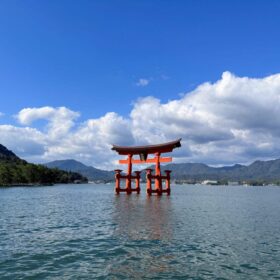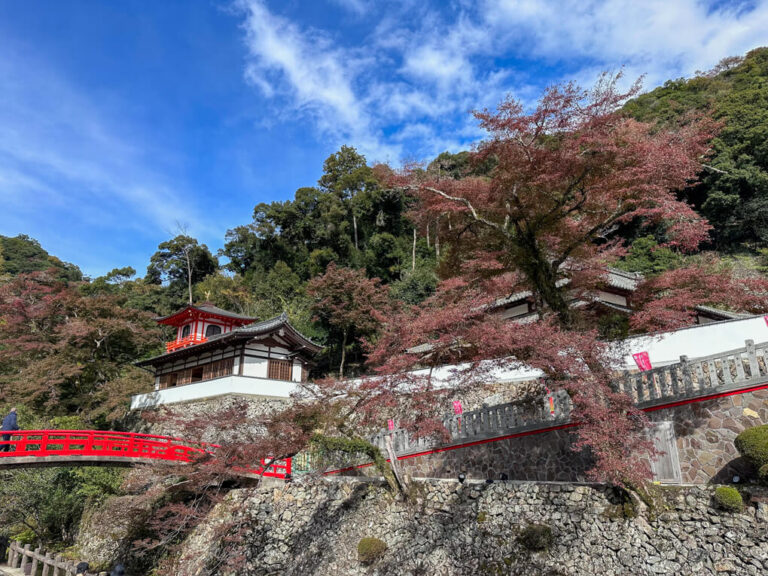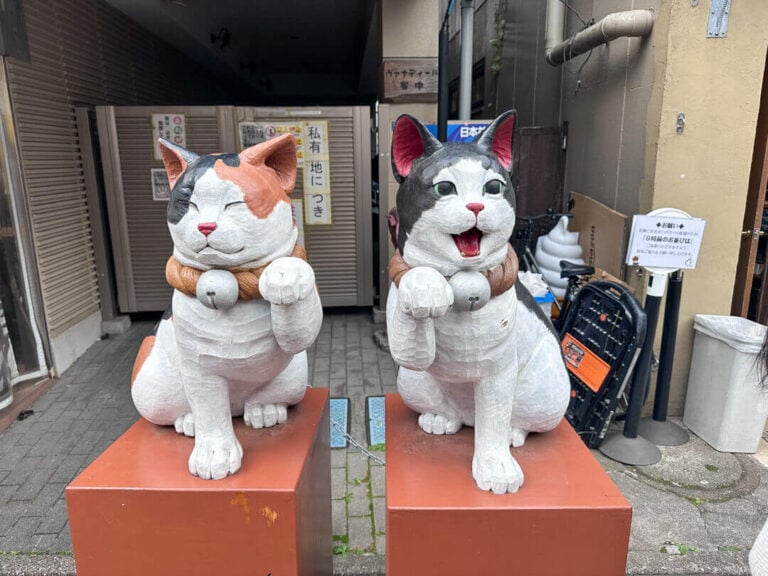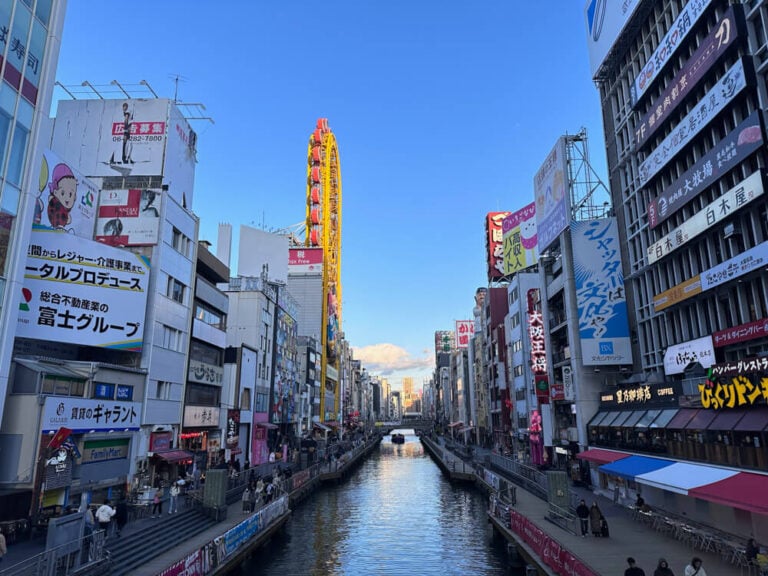The Ultimate 2 Day Hiroshima Itinerary (With Miyajima)
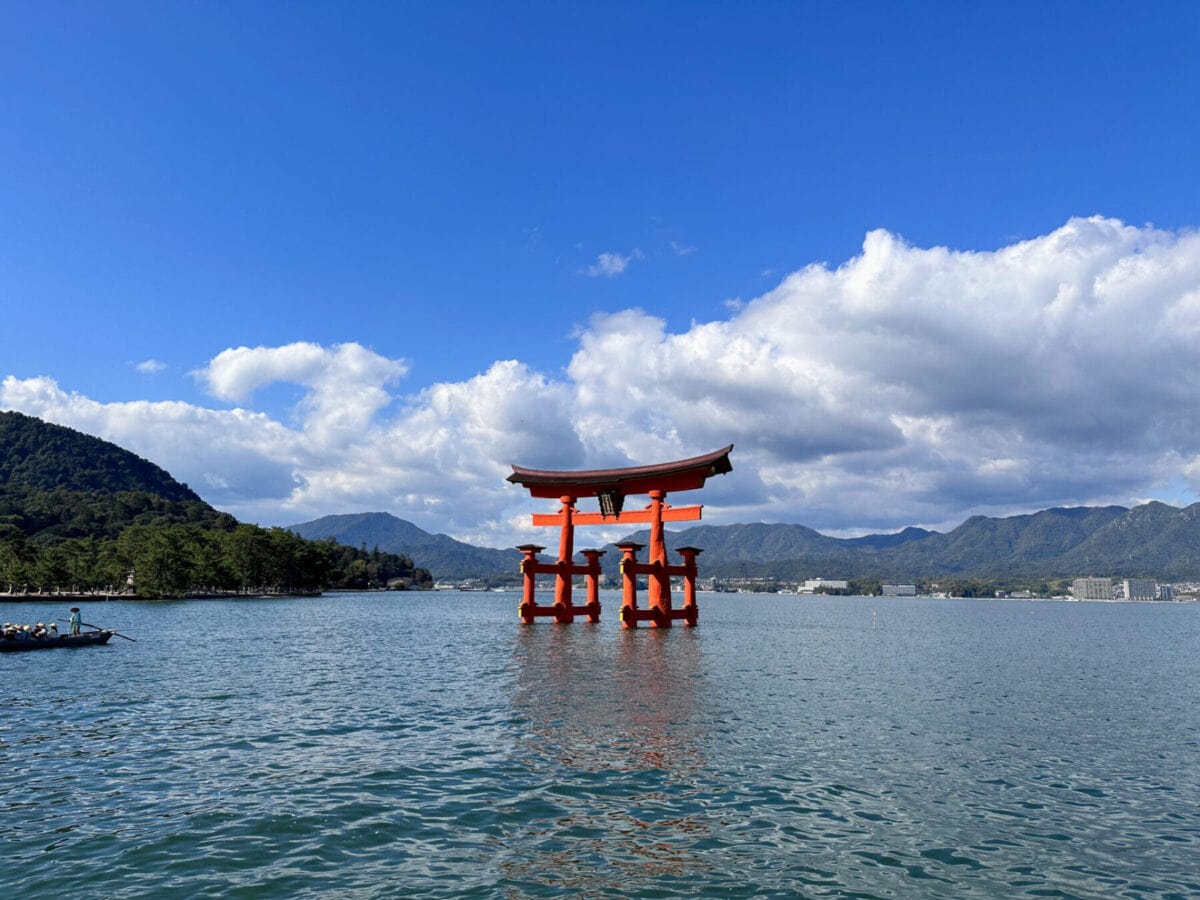
In August 1945, the United States dropped an atomic bomb on the Japanese city of Hiroshima. The bomb caused widespread destruction, killing an estimated 145,000 people and destroying the city. Despite Hiroshima’s tragic past, the city rebuilt itself and is a symbol of resilience.
Visiting Hiroshima was one of the highlights of my solo trip to Japan. Walking around the city almost feels like stepping back in time. It shows a completely different side to Japan. From learning about the city’s difficult past to exploring the mountains of Miyajima Island, Hiroshima offers a diverse range of cultural and historical experiences.
It’s possible to visit Hiroshima as a day trip from Osaka, but I highly recommend spending at least one night there. The city of Hiroshima deserves a full day, as does the nearby Miyajima Island.

I spent two days in Hiroshima. This allowed me to spend a full day exploring the city and one day on the beautiful Miyajima Island.
Below, you’ll find a detailed 2 day Hiroshima itinerary. This includes what to do, how to get around, where to stay, and what to eat. Enjoy!
The best time of year to visit Hiroshima
Hiroshima is a great destination to visit at any time of the year. It follows the traditional seasons of the Northern Hemisphere with December to February being the coldest months and June to August the warmest months. It (normally) remains accessible throughout the year.
Hiroshima is a popular place to witness the famous Cherry Blossom Season (Sakura) during March and April. This is arguably the busiest time of year in Japan as a whole. Unless you’re okay with large crowds and long queues for everything, I’d try and avoid these months.
I visited Hiroshima in November and saw some beautiful autumn colours. With cooler temperatures and fewer crowds, November is the perfect time of year to visit Hiroshima and Japan.
Hiroshima can also be visited during the winter. The mountains surrounding Hiroshima are popular ski destinations, but Hiroshima itself operates as normal.
While Hiroshima still gets busy in the peak seasons, it tends to be slightly less crowded than Kyoto and Tokyo. Similar to Hakone, many people visit Hiroshima as a day trip rather than staying overnight. This means the evenings tend to be much quieter.

The JR Kansai Hiroshima Area Pass
Deciding whether to buy a Japan Rail Pass for your visit to Japan can be a tricky decision. Since the price rise in 2023, the JR Pass is no longer guaranteed to save you money. It’s now often cheaper to buy train tickets as you go. One way to still save money with a JR Pass is to look at the regional passes on offer.
One of the best regional JR passes is the JR Kansai Hiroshima Area Pass. This 5-day pass covers the areas of Osaka, Kyoto, and Hiroshima (including Kobe, Himeji, Nara, Okayama, and Miyajima). You can use the pass an unlimited number of times. It also covers the bullet trains (Shinkansen) and local JR trains and buses. You can also use the JR ferry to Miyajima (which is very useful for this itinerary).
Note: the pass excludes the Okaido Shinkansen between Kyoto and Osaka, but there are other ways to get between the two using your pass.
The JR Kansai Hiroshima Area Pass was the only JR pass I purchased on my trip to Japan. The pass will no doubt save you money if you’re planning to visit several places in the Kansai region.
I purchased the pass through Klook and collected it from Kyoto station when I arrived.
During the five days the pass was active, I visited Nara, Himeji, Kobe, spent two days in Hiroshima, and then went to Osaka. The pass was very good value and covers all transport in this 2 day Hiroshima itinerary.
Day one: discover the history of Hiroshima
Spend your first day in Hiroshima learning more about the city’s tragic past. While the city has been rebuilt, there is still evidence of the bomb around the city. Much of this has been left to educate visitors on the city’s past and to remind us why a similar event should never happen again.
How to get around Hiroshima on day one
The best way to get around Hiroshima is to use the Hiroshima Sightseeing Loop Buses operated by Japan Rail. This bus network connects all the main tourist destinations in Hiroshima. It includes Hiroshima Castle, the Peace Memorial Museum, and several other museums.
The bus departs from outside the main Hiroshima station and takes tourists to the historic and cultural sites.
The Hiroshima Sightseeing Loop bus is included in the JR Kansai Hiroshima Area Pass.
If you’re not planning to buy the pass, consider using Hiroshima’s tram network (the largest in Japan). It’s an inexpensive way to get around.
Note: most of Hiroshima’s attractions are located close to each other. You may find it possible to walk from your hotel without getting any transport. I stayed at a hostel close to the main station and walked everywhere.
Hiroshima Castle
Begin your first day in Hiroshima at Hiroshima Castle (also known as Carp Castle), one of the main attractions in the area. This impressive castle was constructed in the 16th century. As with most of Hiroshima, the original castle was largely destroyed by the atomic bomb in 1945.
The castle was rebuilt and now stands as a testament to the resilience of Hiroshima. Despite being reconstructed, Hiroshima Castle boasts traditional Edo period architecture with a five-story main tower.
You can pay to enter the castle itself or walk around the beautiful castle grounds (which is what I did).
Time to spend here: 30 minutes to one hour
Hiroshima Peace Memorial Museum
Next up is the Hiroshima Peace Memorial Museum. If there is one thing you do in Hiroshima, it should be this. It’s an incredibly humbling and insightful experience.
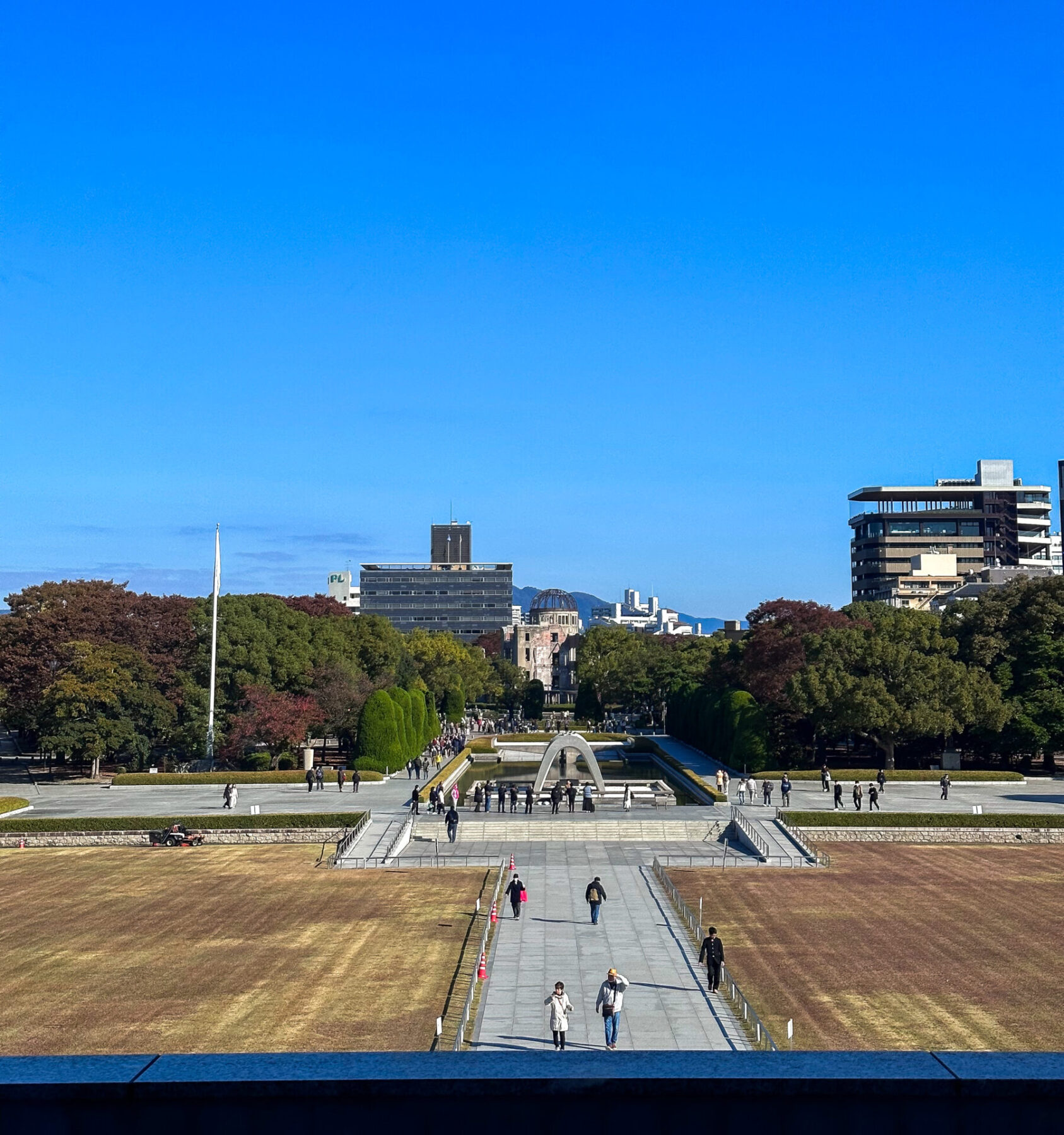
The Hiroshima Peace Museum aims to educate visitors on what happened in 1945 when the atomic bomb was dropped on the city.
There are information boards, artefacts, and video interviews with survivors. It can be intense and difficult at times, but it’s an important visit.
The Hiroshima Peace Memorial Museum also highlights the resilience of the Japanese people. It shows how the city rebuilt itself and campaigns to destroy all nuclear weapons.
Time to spend here: 90 minutes to 2 hours.
Hiroshima Peace Memorial Park
The Hiroshima Peace Memorial Park is in the heart of the city. It’s where you’ll find the museum as well as a few other spots well worth visiting.
I spent an hour wandering around the park and learning more about Hiroshima’s harrowing past.
Tip: before leaving the Peace Memorial Museum, head out of the park to Wildman Bagel (about a five-minute walk away). They’re not your classic US-style bagels, but they’re delicious nonetheless.
Here are a few places to visit in the Peace Memorial Park:
The Phoenix Tree (China Parasol Tree)
Right outside the Peace Museum is the Phoenix Tree. This famous tree was located near the A-bomb epicentre in 1945. The tree was all but destroyed by the blast. However, the following year, the seemingly dead tree came back to life and started to regrow its leaves.
The tree was a symbol of hope for the residents of Hiroshima and stands as a testament to the resilience of the city. Seeds from the tree have been planted around the city.
Hiroshima Victims Cenotaph Memorial
A short walk from the Phoenix Tree is the Cenotaph Memorial. This monument holds a cenotaph holding all the names of the victims killed by the bomb.
The Flame of Peace
The Peace Flame shows two hands holding a flame in memory of the victims of the a-bomb. The flame was first lit in 1964 and will remain lit until the world is free of nuclear weapons.
Children’s Peace Monument
This statue remembers all the children who lost their lives when the nuclear bomb was dropped on Hiroshima.
Clock Tower of Peace
This monument represents the people of the world and the hope for peace. You can hear it chime every day at 8:15 am (the time the bomb was dropped).
The Atomic Bomb Dome
This dome is one of Hiroshima’s most recognisable buildings. The A-bomb dome is the remains of what was once the Hiroshima Prefectural Industrial Promotion Hall.
Despite being close to the blast, much of the building remains standing. It has been left in memory of all the victims who died that day.
You can walk around the outside of the building but understandably can’t go inside.

Hypocenter Plaque
On the outside of the park is the Hypocenter Plaque. This marks the exact spot where the A-bomb was dropped.
Time to spend in the park: One hour
Shukkeien Garden
The Shukkeien Garden is a beautiful Japanese garden in the centre of Hiroshima. The garden was first designed in 1620 and is a peaceful spot in the city.
I had a quick walk through the garden. It was a lovely walk, but I’d only recommend it for those interested in traditional Japanese gardens. As of January 2024, it costs 260 yen to enter.
How long to spend here: 30 minutes
Hondori Shopping Street
The Hondori Shopping Street offers a completely different side to Hiroshima.
The famous shopping street is lined with unique shops and boutiques. Even if you’re not keen on shopping, a walk along the street is well worth it. This is also a good spot to grab some food.
Watch the sunset at Hiroshima Orizuru Tower
Finish your first day in Hiroshima by watching the sunset at the Orizuru Tower. The tower is 50 meters tall and offers incredible views of the city, especially at sunset.
There is an observation deck on the top floor of the building where you can admire the views.
Unfortunately, the tower was closed for maintenance during my visit to Hiroshima. You can check the opening hours and ticket prices here.
Day two: visit Miyajima Island
The second day of this 2 day Hiroshima itinerary will be spent on the wonderful Miyajima Island. Many visitors just spend a couple of hours here, but I’d recommend dedicating a full day to exploring the island.
Miyajima Island, also known as Itsukushima, is a beautiful spot in the Seto Inland Sea close to Hiroshima. The island is mostly known for the famous Itsukushima Shrine, but there are so many wonderful gems to explore here.

The island has long been a sacred site and an important part of Japanese culture. In fact, Miyajima translates as “shrine island”.
I dedicated a full day to visiting Miyajima Island. This gave me the time to explore more of the island including hiking up Mount Misen. However, if you’re short on time, you could see the main highlights in a few hours.
How to get to Miyajima Island from Hiroshima
The easiest way to get from Hiroshima to Miyajima is to use the Japan Rail services.
Take the JR San’yo Main Line from Hiroshima to Miyajimaguchi. This train takes about 25 minutes.
From here, walk to the ferry terminal (it’s well-signposted). JR have a ferry service which runs every thirty minutes between Miyajima and the mainland.
If you have a JR Pass, all these services are included in your ticket. If you haven’t bought the full pass, consider purchasing the JR Kansai Hiroshima Area Pass. This pass allows you to travel between the likes of Osaka, Kobe, Kyoto, Himeji, and Hiroshima. It also includes the JR ferry over to Miyajima Island.
Things to do on Miyajima Island
Itsukushima Shrine
First up on your visit to Miyajima Island is the famous Itsukushima Shrine, also a UNESCO World Heritage Site. This is one of Japan’s most famous cultural sites and the reason many people visit Miyajima Island.
The Itsukushima Shrine lies in the waters surrounding Miyajima and is nicknamed the “Floating Torii”. The shrine separates the mountains from the sea and is renowned as one of Japan’s most scenic spots.
The tide plays a big part in your experience when visiting the Itsukushima Shrine. Try and visit the shrine both at low tide and high tide.
At low tide, you can walk right out to the shrine. At high tide, you’ll witness that picture-perfect sight. This is yet another reason to spend the full day at Miyajima.
If you visit at the right time of year, you can also see the famous Shinto shrine at sunset when it’s arguably the most beautiful. I paid a quick visit on the way back to the ferry, just as the sun was setting.
You can’t miss the Itsukushima Shrine. You’ll see it from the boat as you arrive and can walk straight along the waterfront to reach it.

Explore Omotesando street
Omotesando is the main tourist street in Miyajima. It’s where you’ll find most of the restaurants, shops, street food and cafes.
There are some great souvenir shops here. It’s where I ended up buying most of my souvenirs including customized chopsticks and rice spoons. It’s where you’ll find the world’s biggest rice spoon!
If you’re after some gifts from Japan, take some time to visit the famous Omotesando street.
Try some oysters
Oysters are a speciality in Miyajima. They are sold all over the island and renowned as some of the best in Japan. You’ll find them served in various ways with different flavours and methods of cooking.
Head to Omotesando Street to see what’s on offer.
Wander through Momijidani Park
Walking around Momijidani Park is a tranquil experience in Miyajima. Filled with wild deer and maple trees, the park is a great way to enjoy the natural beauty of Japan.
Momijidani Park is known for its vibrant display of autumn colours. I visited the park in November when the colours were at their finest. The fall leaves in Momijidani Park were some of the best I saw in Japan.
Momijidani Park is also a great place to see the famous cherry blossoms.
Tip: if you’re planning to hike up Mount Misen via the Momijidani course, you’ll need to walk through the park to reach the start of the hike.
Hike Mount Misen (or take the ropeway)
Visiting the peak of Mount Misen is one of the best things to do on Miyajima Island. On clear days, there are spectacular panoramic views of the surrounding Seto Inland Sea. You can sometimes even see Hiroshima.
There are two ways to reach the peak of this sacred mountain:
1 – Take the Mount Misen Ropeway then walk 30 minutes to the top.
2- Save some money and walk the entire way (2 -3 hours return).
The ropeway is the most popular way to reach the top of Mount Misen. The cost is currently 1,100 yen for a one-way trip. Once you reach the top of the ropeway, there’s still a significant amount of walking to do and some steep incline.
With the ropeway being so expensive, I decided to walk to the top of Mount Misen.

There are three different tracks up to the peak of Mount Misen. The most popular route is to walk up the Momijidani Course and return via the Daisho-in Course.
In total, the walk takes about two to three depending on your pace (up and down). The Momijidani Course is very steep so it can take a bit of time. If you’re worried about your fitness levels, there’s the option to take the Daisho-in Course both up and down. This is the least steep of the three tracks.
If you opt to take the popular Momijidani Course up Mount Misen, it takes about 45 minutes to reach the top ropeway station. From here, it’s another 30 minutes to the top of Mount Misen.
It’s a popular option to take the ropeway up Mount Misen and return on foot via the Daisho-In Course. This route ends at the Daisho-In temple which is the next stop on this Miyajima itinerary.
Visit Daisho-in Temple
The Daisho-in temple is another popular attraction in Miyajima. This historic complex is a Buddhist temple of the Shingon School. It’s located right at the bottom of Mount Misen. From the top of Mount Misen, you can hike down the Daisho-in Course to end your hike at the temple.
One of the unique features of this temple is the 500 Rakan Statues. Each of the statues represents a monk who is a disciple of Buddha. Every statue is unique, showing different emotions such as happiness, pain, and wisdom.
The grounds of the temple are serene and beautiful. It’s also likely you’ll see friendly deer roaming around. I visited a lot of temples while in Japan, but the Daisho-in temple remains one of my favourites.

See the Five-Story Pagoda
The impressive Five-Story Pagoda is located by the Itsukushima Shrine in the Daisho-in temple complex.
At just under 30 meters high, this beautiful structure is known for its traditional Japanese architecture.
You can’t go inside the building, but you can admire it from the outside. It’s surrounded by a variety of Japanese trees creating a beautiful setting.
Watch the sunset
End your day on Miyajima Island by watching the sunset behind the famous Itsukushima Shrine. The famous Torii gate is beautiful at all times of the day, but it certainly has a special charm during golden hour. It’s a fantastic sight and the perfect way to end your day in Miyajima.
The shrine is about a ten-minute walk from the ferry terminal. After watching the sunset, head back to the city to complete your 2 days in Hiroshima.
Other things to do in Hiroshima
If you have some extra time in Hiroshima or simply want to explore some less visited spots, consider one of the below options.
Visit Mitaki-Dera Temple
The Mitaki-dera Temple is a historic temple nestled in the mountains. The temple sits in the forest of Mount Mitaki, just north of Hiroshima.
This beautiful Buddhist temple is particularly special in the autumn when the leaves put on a colourful show.
The temple is only two stops on the JR Kabe Line from Hiroshima station, but it’s another 15 to 20-minute walk from there. Alternatively, you can catch a bus from Hiroshima station to the Mitaki Kanon bus stop.
The Japan Travel App by Navitime is an amazing app to download. It will help you get from A to B and tell you the best route.
Visit an Art Museum
There are three major art museums in Hiroshima which can easily be built into the above itinerary. This includes the Hiroshima Museum of Art, the Hiroshima Prefectural Museum of Art, and the Hiroshima City Museum of Contemporary Art.
For those interested in European art, your best option is the Hiroshima Museum of Art. This fantastic museum is home to artwork from the likes of Monet, Renoir, and Van Gogh. There is also a collection of modern Japanese art here.
For something a little bit different, consider a visit to the Hiroshima Prefectural Museum of Art. The museum is home to a range of art related to Hiroshima and Japanese culture. The lobby has a view of the Shukkeien Garden.
Go to Rabbit Island
Want to go to an island full of rabbits? Well, in Japan, you can!
The island was once a secret site for chemical weapons but has now been transformed into a sanctuary for thousands of rabbits. The bunnies freely roam the island and there are several walking trails for visitors to interact with the rabbits.
The journey from Hiroshima to Rabbit Island takes about 2-hours each way, so it’s a bit of a long way. However, there aren’t many places in the world where you can visit somewhere like this.
You’ll need to take the Sanyo Shinkansen train to Mihara from Hiroshima. Once at Mihara station, catch a Kure Line local train to Tadanoumi. You can then catch the ferry to Rabbit Island.
Where to stay in Hiroshima
There is a range of accommodation options in Hiroshima perfect for all budgets. I’d suggest staying close to the JR Hiroshima station. It’s near to the main shopping area which has lots of restaurants and bars. Most of the main attractions are also within walking distance from here (or close to the bus stop to catch the bus).
Downtown Hiroshima is another great option. This is where you’ll find the main historic attractions such as the Peace Memorial Museum. The two areas are within walking distance.

Budget accommodation
For fellow backpackers and solo travellers, I can’t recommend the Guesthouse Akicafe Inn enough. This is without a doubt one of the best hostels I have ever stayed in.
They have a female-only dorm with pod-style beds. They come with great ventilation and storage space (if you know, you know). The bathrooms were also clean. It wasn’t the most social of hostels, but I found that to be the case in most hostels in Japan.
Mid-range accommodation
For those looking for a bit more space and privacy, the KIRO Hiroshima Hotel is in a great location. Although on the pricier side, the hotel is very modern with a range of rooms available.
You could also consider the Smile Hotel. It’s a little bit older but offers everything you need.
What to eat in Hiroshima and Miyajima
Hiroshima is another epic food spot in Japan, offering its own take on several classic Japanese dishes.
While in Hiroshima, be sure to try the famous Okonomiyaki. You can find this savoury pancake all over Japan, but Hiroshima has a unique version. Here, the ingredients are stacked rather than being mixed together. I tried this at Okonomiyaki Junior and it was delicious.
If you have a sweet tooth, look out for Momiji – these small bites are shaped like maple leaves and filled with various fillings such as bean jam.
Oysters are another local delicacy in Hiroshima and on the nearby Miyajima Island. Oysters can be found at many restaurants and street food stands in the area. They are often served raw with soy sauce, and are also served fried, grilled, and baked. You can even get Oyster curry bread.
Miyajima De Gansu is another street food famous in Hiroshima. It’s deep-fried minced fish with onion and can be found in both Hiroshima and Miyajima.
Summary: Is Hiroshima worth visiting?
Yes, Hiroshima is worth visiting. It was unlike anywhere else I visited in Japan and one of my favourite places. The city highlights an important part of Japanese history. If you can build a trip to Hiroshima into your Japan itinerary, I’d highly recommend it.
I’d recommend spending at least one night in Hiroshima to make the most of the area. This will give you time to explore both Hiroshima and Miyajima Island without rushing.
If you have the time, spending two nights in Hiroshima is the ideal amount of time. I was originally only spending one night in Hiroshima and I’m so glad I changed it two at the last minute.
Continue planning your trip to Japan with the below guides:
- 5 Reasons to Visit Yanaka Ginza – A Hidden Gem in Tokyo

- 6 Easy Day Trips from Osaka

- A Guide to Visiting Hakone’s Mishima Skywalk (For Epic Views of Mount Fuji)

- Hakone Guide: Best Things to Do and Helpful Itinerary Ideas

- Harry Potter Studio Tour Tokyo: How to Visit and an Honest Review

- Is Hakone Worth Visiting? 10 Great Reasons to Convince You It Is

- Japan Bucket List: 13 Things to Do On Your First Trip

- Minoo Park: A Beautiful Day Trip from Osaka

- Solo Travel in Japan: 16 Helpful Things to Know

- The 5 BEST Places to See Mount Fuji from Hakone

- The Ultimate 2 Day Hiroshima Itinerary (With Miyajima)

- The Ultimate Japan Travel Guide For First Timers (2025)

- Visiting Japan in November: The Ultimate Guide












